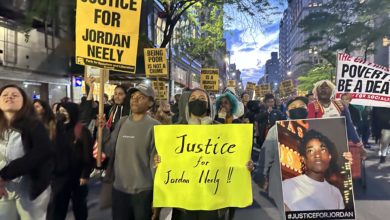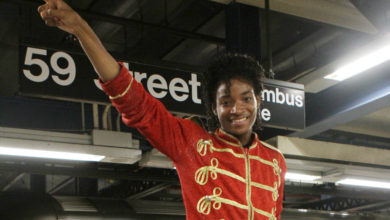During the week of Jan. 20, police in California, New York and Florida apprehended eight former members of the Black Panther Party. The eight were charged with murder and conspiracy to murder related to the killing of San Francisco police officer John Young in August 1971.

One of the Panther 8, Harold Taylor, and two other men were first charged with the murder in 1974. Those charges were dropped after it was revealed that their admissions of guilt—written scripts penned by the authorities—were only obtained after the three were severely tortured.
More than 35 years later, Harold Taylor and seven others are still being persecuted by the state. Numerous grand juries have investigated Young’s killing. None have brought indictments. In 2005, five of the eight men—Richard Brown, Harold Taylor, Ray Boudreaux, Hank Jones and John Bowen—were incarcerated after refusing to cooperate with yet another investigation.
The Panther 8 are all former members of the Black Panther Party. They are now being held as political prisoners for an action committed 35 years ago. None of the men have evaded the authorities or hidden. In fact, they have remained outspoken against the repression they face from the state. They are being held on bonds as high as $5 million.
Why now?
The most recent court papers filed claim that the rebirth of the case against the men is based on a fingerprint on a cigarette lighter, shotgun shells and the testimony of an informant. In 2004, the FBI submitted an affidavit to the court stating that an investigator had allegedly matched five of the 15 shotgun shells recovered from the Ingleside police station, where the shooting took place, to spent shells obtained at the New Orleans home of Herman Bell, another of the accused eight, in 1973.
Both the shotgun taken from Bell’s residence and the weapon that was supposedly used in Young’s killing have been lost. So have all the paperwork and other evidence over the last 35 years.
Stuart Hanlon, a California-based attorney representing Herman Bell, reacted to the supposedly “new” evidence and the loss of evidence and paperwork as an admission to the true political nature of this most recent allegation. “It’s a joke,” Hanlon said. “It really was for the media and the public and not for the court.”
Appearing in court shackled and surrounded by heavily armed police, with bail set between $3 to $5 million, the Panther 8 are not just facing the retaliation of the ruling class. They are also being used to create a sensationalist media frenzy in an attempt to rewrite history and deprecate the power of the people’s movement.
This new repression is based on a long history of oppression and the struggle against it.
An age of national liberation
The events that led to Young’s shooting came in the context of the dramatic rise in the national liberation movements in the 1960s and 1970s. The Black Panther Party for Self Defense was born as a grassroots organization responding to the need of Oakland’s Black community in 1966 to defend itself from racist police violence. But the Black Panther Party grew into a national liberation movement that inspired similar struggles by revolutionaries and oppressed nationalities.
This rising resistance posed a deep threat to the capitalist system. The Black Panther Party advocated a united revolutionary front. By 1970, the Black Panther Party had over 35 chapters around the country. Panther-run free breakfast programs and many other survival programs were serving hundreds of thousands of children every day.
Huey Newton, one of the founders of the Black Panther Party, stated that the purpose of building the survival programs was “to enable people to meet their daily needs by developing positive institutions within their communities and to organize the communities politically around these programs.”
The Black Panther Party’s political program stressed the need for international solidarity and a socialist revolution in the United States.
The Black Panther Party was ultimately crushed by government infiltration and attacks. The FBI’s COINTELPRO program specifically targeted the Panthers and other revolutionary and national liberation groups. It included targeted murders, harassment and torture.
Support growing
The government’s continued attempt to persecute and imprison members of the Black Panther Party and other political activists from the 1960s and 1970s—like Jamil Al-Amin, Kamaul Sidiki (formerly Freddy Hilton), Sara Jane Olson and Mumia Abu-Jamal—is a continuation of the violent campaign of repression of that period. It shows the depth of the hatred that the U.S. ruling class has for those who fight for real liberation and justice—a hatred that spans decades.
The frantic media coverage of revolutionaries in shackles is an attempt to rewrite political history by criminalizing the Black Panther Party and all revolutionaries who fought and continue to fight for freedom. But rewriting history will not be carried out without a challenge.
Already, activists are rallying to defend the Panther 8. Every court hearing is met by angry protests against the state and shows of support for the brave fighters for justice.
Che Guevara once said, “The present is struggle, but the future is ours.” The fight to free the Panther 8 is part of building that future.
For more information on how to support the Panther 8, contact The Committee for the Defense of Human Rights at freethesf8.org
Activists protest at court hearing for the Panther 8, San Francisco, Mar. 13.
Photo: Scott Braley






